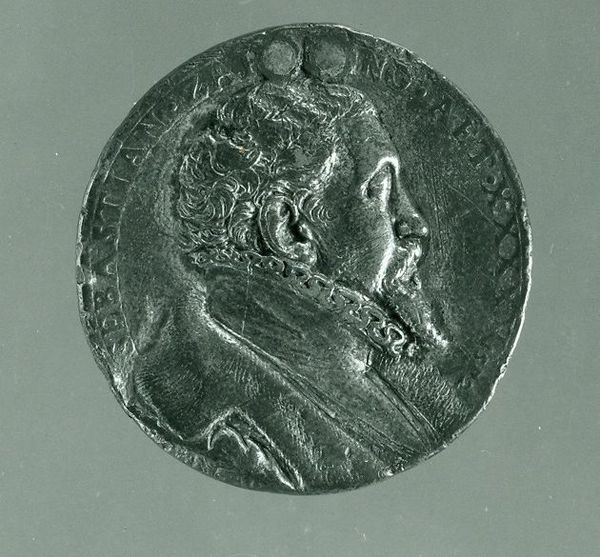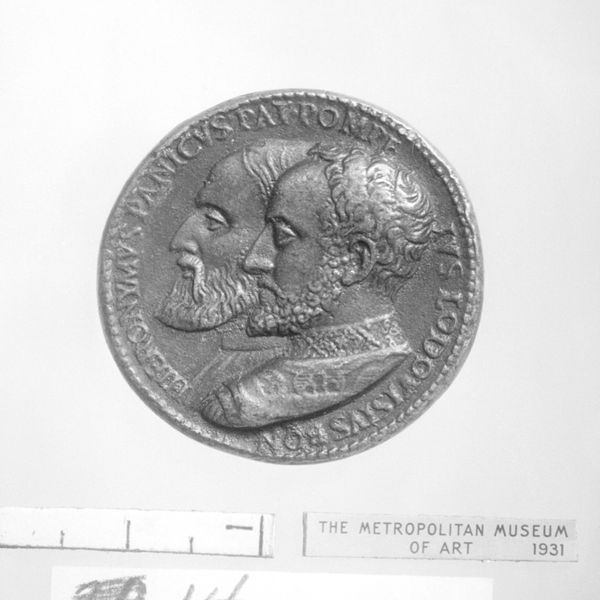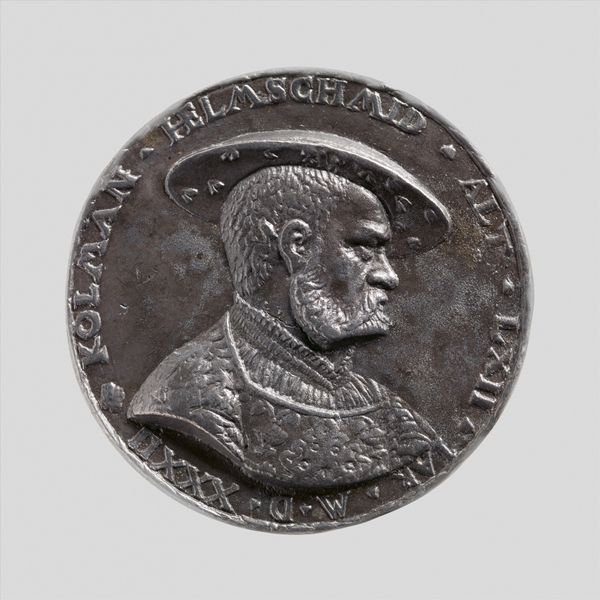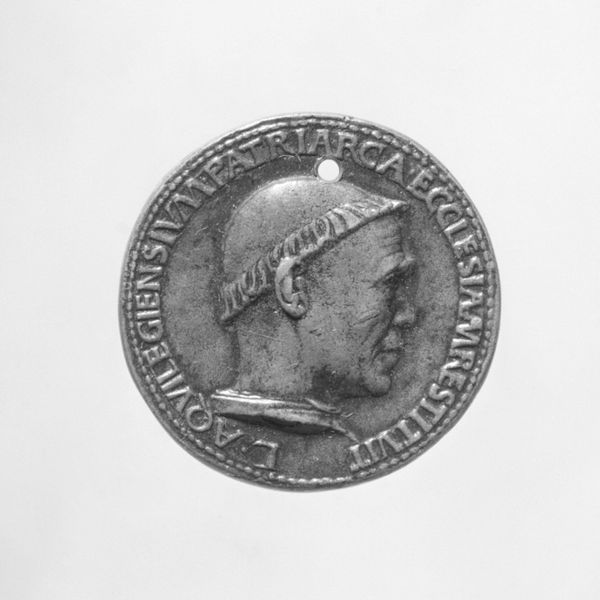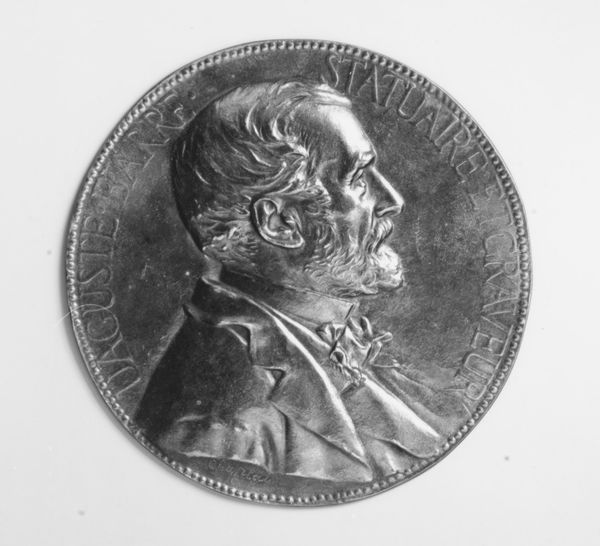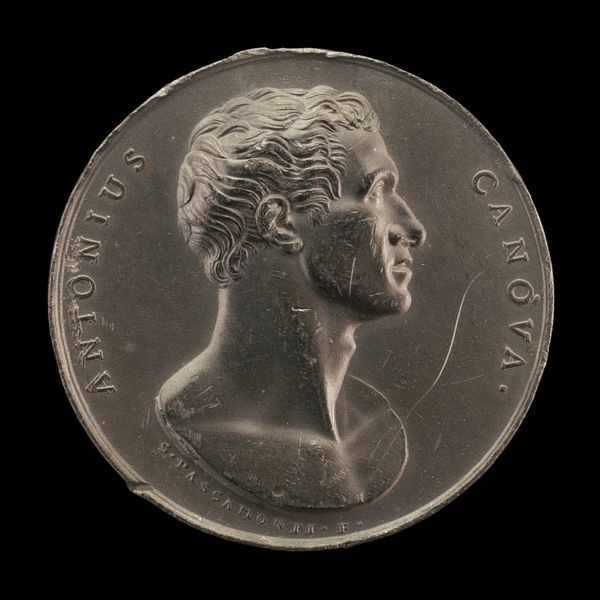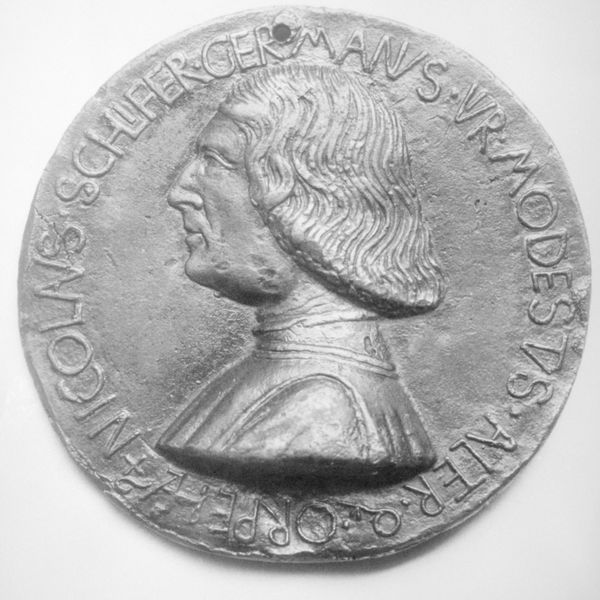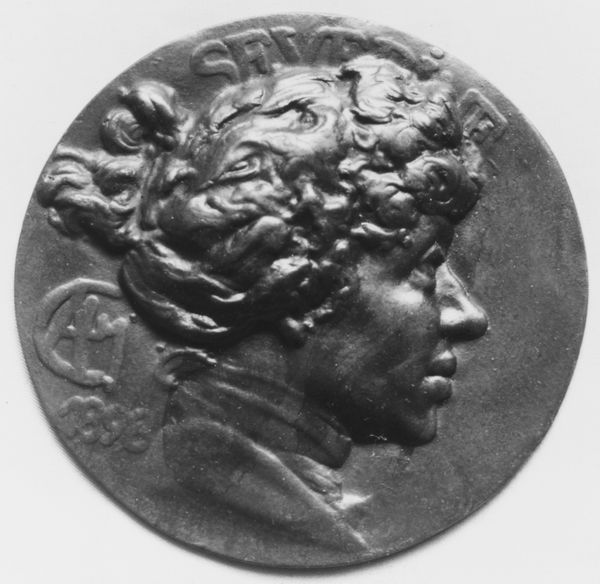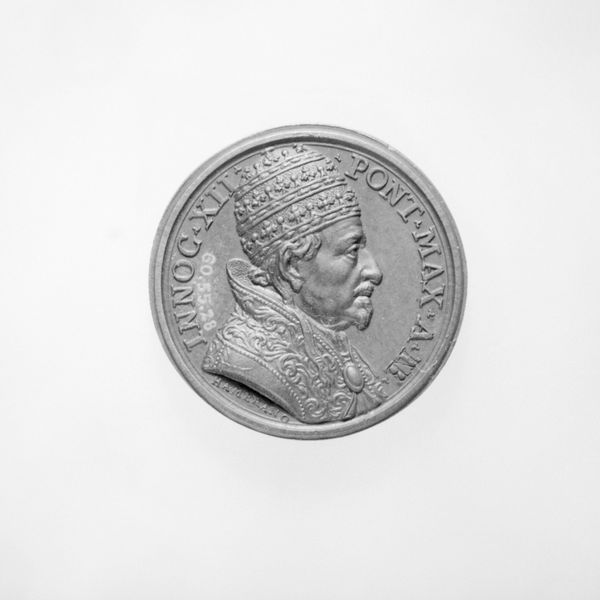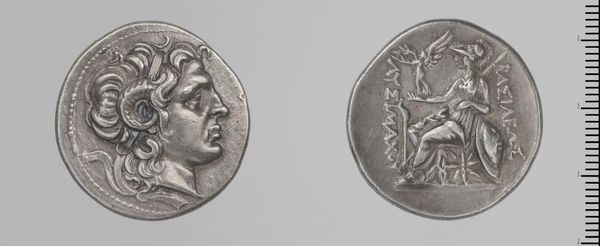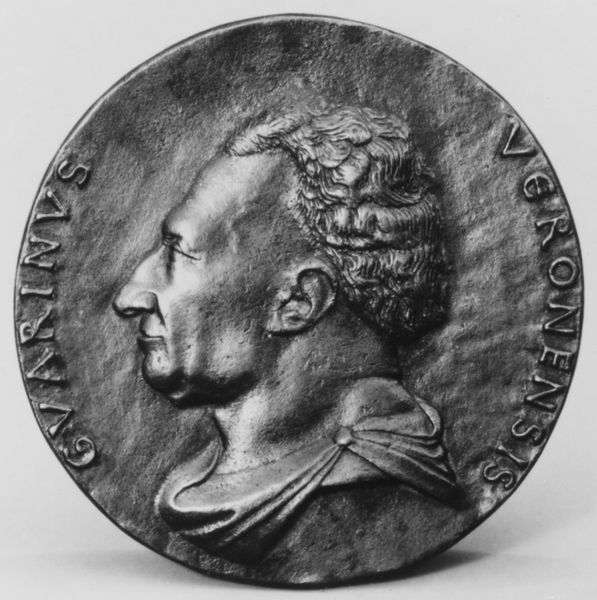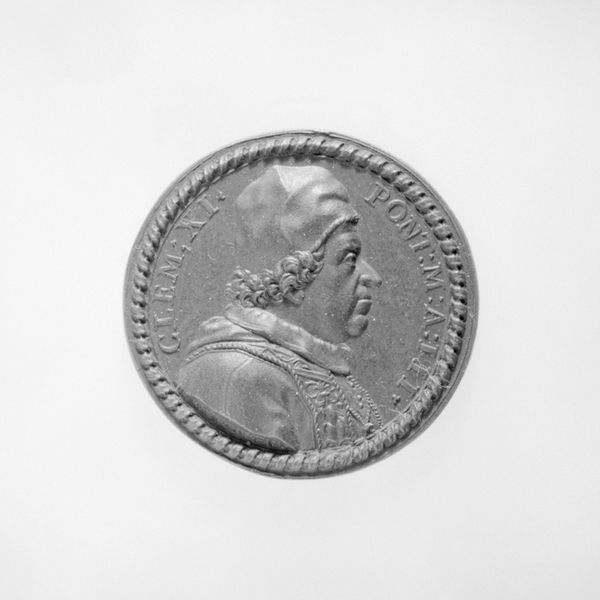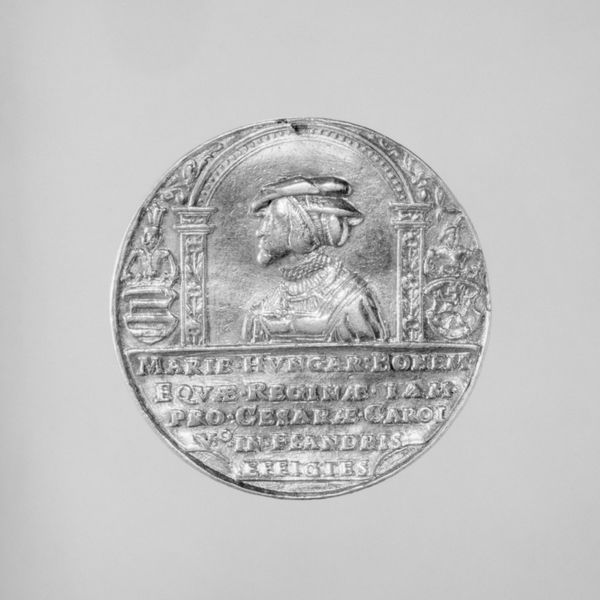
Dimensions: Diameter: 2 11/16 in. (68 mm)
Copyright: Public Domain
Curator: Immediately striking is this circular form, simple, almost austere in its presentation. It gives the sense of looking at an ancient coin. Editor: We are indeed viewing a medal; it's a bronze portrait of Jules Meline, created in 1892 by François-Joseph-Hubert Ponscarme. The work now resides at the Metropolitan Museum of Art. Curator: Medals historically have commemorated individuals or events, acting almost as pocket-sized monuments. The profile view, common to coinage, carries echoes of Roman emperors. Editor: Absolutely. And notice the choice of bronze; the warm, metallic tones further contribute to the classical aesthetic. The relief is also finely rendered, lending an air of gravity and dignity. What is your view of how these portrait medals might function socially? Curator: Ponscarme’s portrait can be read as a commentary on the role of the individual in shaping social or political currents. Medals like this provided not just a personal memento but actively circulated values and historical memory throughout society. Editor: The careful attention to detail elevates Meline. Note, for example, how the sharp, precise features communicate refinement, intelligence. The texture of his beard, the subtle modelling of his cheek – the man’s presented not merely as a face, but as a personality meant to be recognized, even idealized, for years. Curator: Consider also, though, the potential political dimensions of portraying Meline in this specific manner during that particular period. What values were being attached to leadership or citizenship through the artistic choices made by Ponscarme? Editor: A solid question; and one might observe that neoclassical style often aligns itself with conservative ideals. In this, Ponscarme makes sure the portrayal of Meline as an exemplary citizen seems intended. The image projects integrity through its form. Curator: Examining art through that broader context reveals the intersection of politics, public perception, and material culture. This portrait is not simply the likeness of a person; rather, it is part of a network of social values, and acts, too, as political symbolism. Editor: Quite. By examining a single object we discover broader currents.
Comments
No comments
Be the first to comment and join the conversation on the ultimate creative platform.
